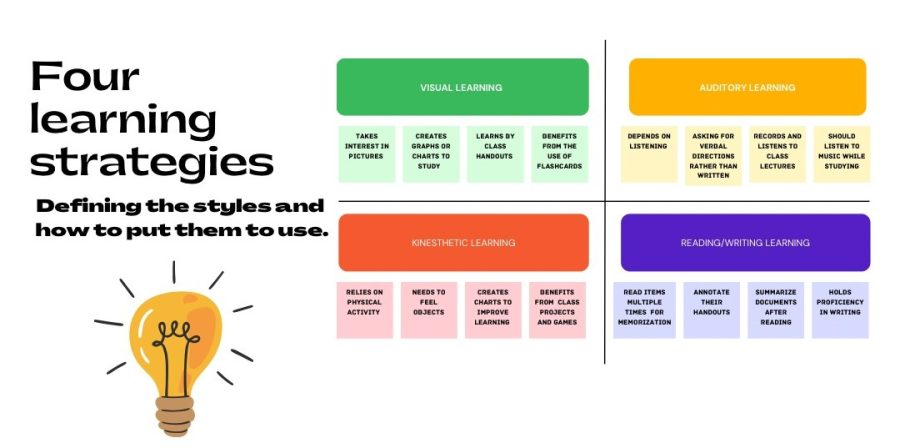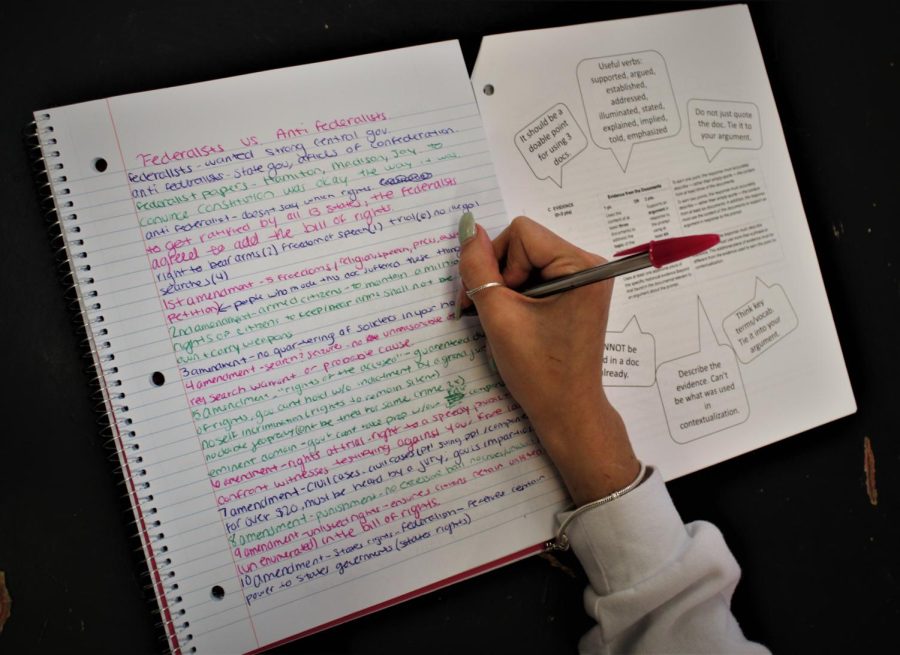Maximizing studying with designated learning styles
The four learning techniques play a crucial role in the lives of students and teachers. Each learning style holds a unique method of retaining material, and by discovering the styles that work for each student, studying and comprehending information will come easier. Several NC students find visual learning the best fit for them, and they share their favored method of studying.
September 1, 2022
Over the recent decades, researchers discovered four dominant learning styles: kinesthetic, visual, auditory and reading and writing. As people discover and identify with their particular style, they will also find ways to interpret information in the best way possible.
People with a kinesthetic style of learning commonly use a hands-on approach to comprehend information. Activities such as class projects, creating charts and using index cards help with information processing. Studies also prove that with kinesthetic learning, an increase in body movement allows for extra attention while studying. In return, students will repeat similar movements during exams, which will help them recall information.
Another learning strategy includes visual representations, which aid learners who understand by sight. Visual learners frequently create pictures in their heads to retain information. These learners in specific benefit from the classroom environment because of the whiteboard, pictures and graphs teachers use to display their lessons.
“I would definitely call myself a visual learner. One thing that helps me is using specific colors or unique shapes and symbols to emphasize key terms on my notes,” junior class president Ryan Lacey said.
People who follow this strategy effortlessly visualize imagery, follow directions and hold exceptional organizational skills. Students with this style should sit toward the front of the classroom, take notes during class and pay close attention to the diagrams displayed in assignments. During study sessions, students should spend their time in a quiet room to avoid distractions, and focus on the material and objects around them.
“I would say I am a visual learner because I have always learned best from watching demonstrations and taking visually appealing notes. I study best by rewriting my notes to be enjoyable to look at and easy to understand. I would suggest this to other visual learners because it makes studying more entertaining and memorable when the notes are appealing,” junior Holly Stallings said.
Several researchers determined reading and writing as a learning style and even referring to it as the second visual style. Linguistic learners tend to encounter problems when presented in graphs, pictures or lectures because they prefer textbooks and note-taking.
Annotating commonly benefits students with this approach, and after reading through a handout, students should attempt to summarize the document in their own words. During note taking, they should keep their notes as concise as possible to enhance the quality of studying before testing. Moreover, linguistic learners tend to excel in writing and use writing as a form of self-expression.
In contrast, auditory learners rely on listening as a way of processing material. People with this learning strategy benefit from class discussions rather than writing assignments. Auditory listeners should ask for verbal directions, record conferences and play background music while studying, to easily recall information during tests.

Similarly, teachers benefit from discovering students’ learning techniques. Teachers who adhere to their students’ learning styles will see a boost in test performance because the students will retain the material in the way best for them.




